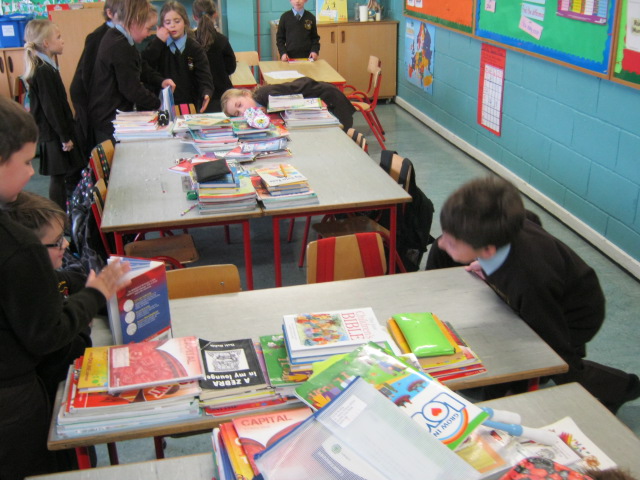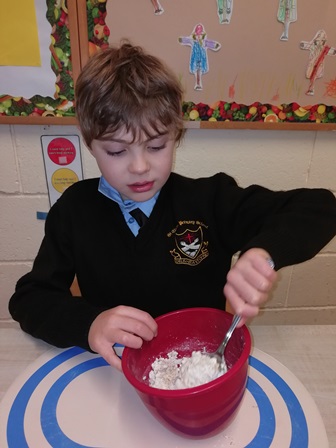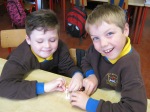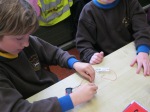Experiment 1: Count the Taps!
What were we investigating?
Do sound waves travel better through a gas or a solid?
What did we do?
We learned that the air that we talk through is a gas and it can be interfered with by things like the wind.

We tested to see if we could count a tapping noise more clearly if we listened with our ear on the desk.
What did we learn?
In a solid you can hear the sound waves clearly. We weren’t sure however, if they were clearer.
Experiment 2: Making Rice Jump
What were we investigating?
Can we see sound waves at work?
What did we do?

We placed some cling film over a bowl and then placed some rice on top of the cling film. We then banged a drum close to the rice to see if the sound waves could make the rice jump.
What did we learn?
Even from a distance away the sound waves travelled from the drum hit the cling film and made the rice jump. Even though they are invisible we can see the force moving the rice.
Experiment 3: String Phones
What were we investigating?
Can we make a “phone” to send a message from our class across the front of the school to Mr Scott’s room (Room 5)?
What did we do?
Step 1: We designed and made our own string phone’s and tested them to see if they worked.
One group tried putting two strings in their phone.(It didn’t seem to work any better)
Step 2: We measured to see how far apart our phones stretched and we tested to see if the sound got weaker on the longest phones.

Step 3: We then made another test string phone 4 metres long and we tested to see if it still worked.
Step 4: We measured the distance from our classroom to Mr Scott’s using a trundle wheel. It was 21 metres and 61 centimetres window to window.

Step 5: We made our new extra-long string phone. We sent a group down to Room 5 to listen for the message and left two children in our class to call it out. Nobody but the callers knew the message (It was: “ Ireland are going to win!”).
Step 6: We decided to do a final test to see if we could “listen in” on the line between the two classrooms.

What did we learn?
We learned lots but the most important bits are:
- The string has to be pulled tight for the phone to work well
- Putting two strings on the phone might actually make it harder to hear a message.
- The quality of the phone does not diminish between 1 and 4 metres.
- On a very long string- phone the message isn’t as clear as on a short one but we were still able to work out the message that was transmitted.
- By attaching another string to the main line we can “listen in”.





































You must be logged in to post a comment.